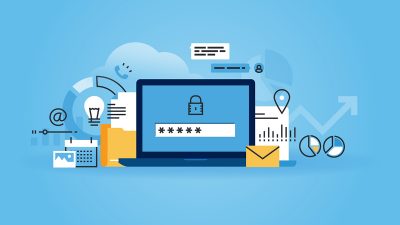How can cyber attacks be reduced?
By John Merrey

From your email to your bank account, a password has become the everyday level of security expected to be used. Whether conducting personal or professional work, keeping your data safe from immediate or future intrusion can become an afterthought for many.
What are some of the easy-to-miss points of intrusion? What other safeguards can a person or business take to prevent data theft and network intrusion?
From the individual to the group, below, we will make a note of some simple steps and aids to keep your information and networks safe.
Basic steps for prevention
You can take different precautions to protect your sensitive information and important assets better.
- Password security and updating should be performed regularly. Use special characters (numbers, letters, symbols, etc.) to increase complexity and reduce the likelihood of someone familiar figuring it out.
- Be cautious of links in emails from unknown sources. It can be easy to click a link in an email chain without understanding where your network will connect to. If you do not recognize a link, contact your IT department and follow their instructions to have the link investigated. One wrong click could give access to your machine or install malicious software onto the network.
- Do not install unauthorized software without first receiving permission from leadership and your IT Group. Often, it can be a simple matter of trying a new media player or other application. If the source of the application download is compromised, the application itself can have malware attached, creating vulnerabilities on your system and the network as a whole.
- If you walk away from your computer or terminal, remember to lock or put the system to sleep. It does not take long for someone to walk to your computer and retrieve information without knowing if you leave the door open.
- Choose to use your own trusted broadband and mobile tethered networks over publicly offered WiFi whenever possible.
Higher-level cybersecurity protection
IT groups may employ the use of password manager programs. These programs take the password game up a notch by allowing a computer program to assist with generating multiple passwords for a single user and their accounts, with their access being restricted to them alone. Reminders and aids are built in.
Advertisements and cookies that are commonplace on websites and social sites are notorious for data collection and profile building. Using a companion application, such as an ad blocker installed in your web browser, can minimize the information sent and used to track the user.
The use of a VPN (Virtual Private Network) can be useful in encrypting your point of network connection. In addition to keeping your data encrypted, the location of your request can be changed by the program, making tracking more difficult for those looking to gather information from your home or business network.
Keeping yourself aware of some of the ways outside agencies and actors can use to gather your information is the best approach to keeping your data safe. By following the basic steps above and incorporating security programs as you become familiar, you are making yourself a much harder target for those who seek to gain access to your information. Whether it be your personal email and banking information or your company’s assets and financials, proper cyber security is everyone’s responsibility.
